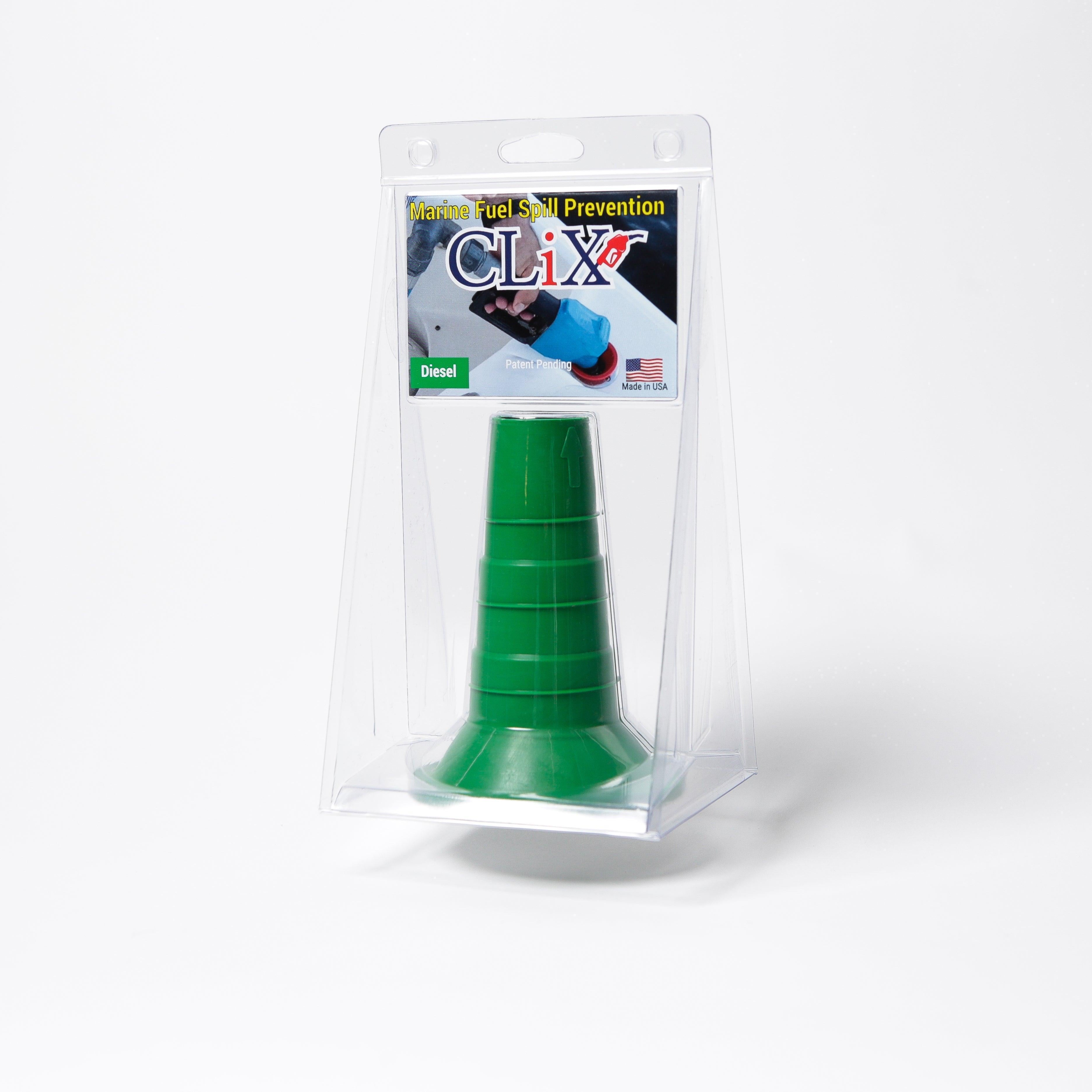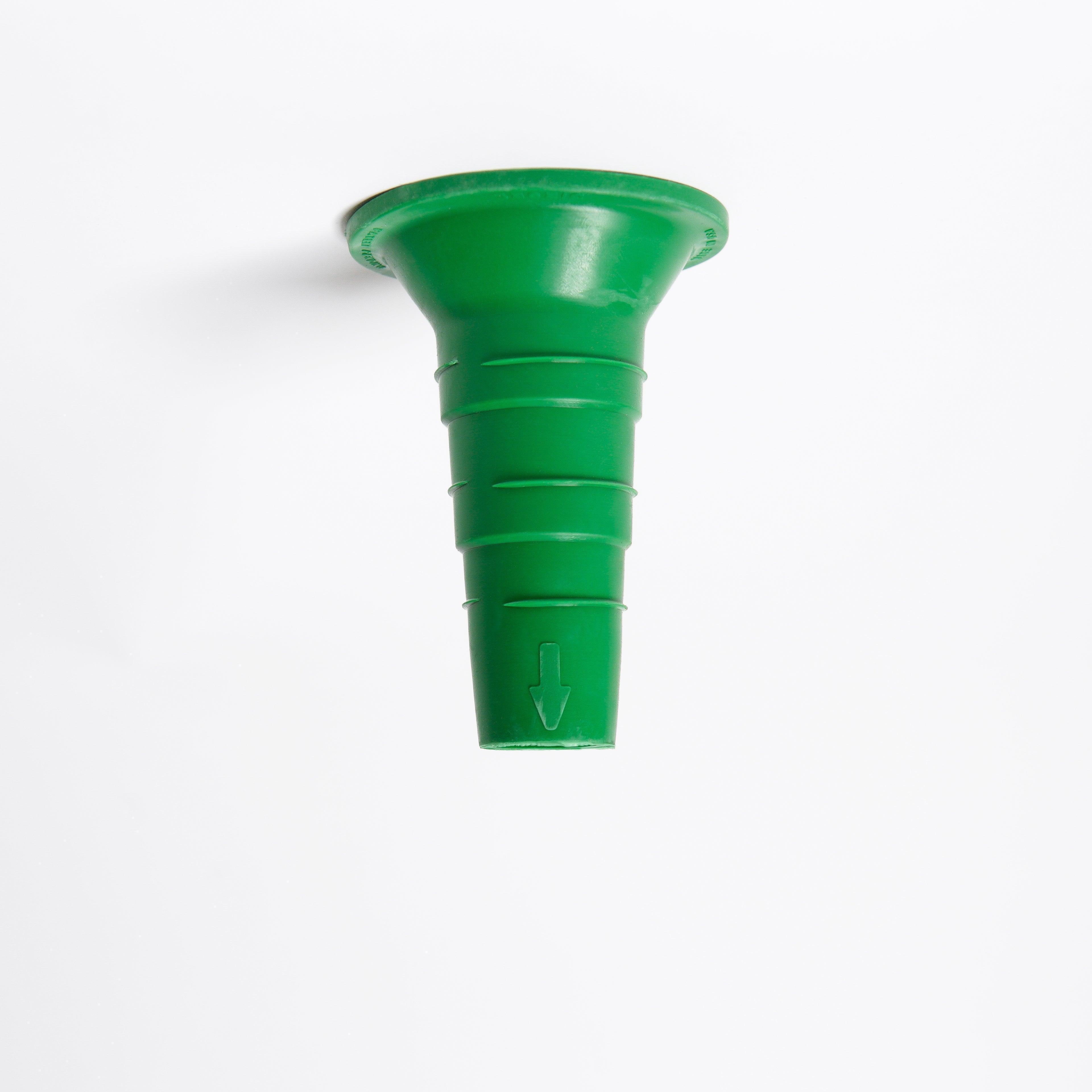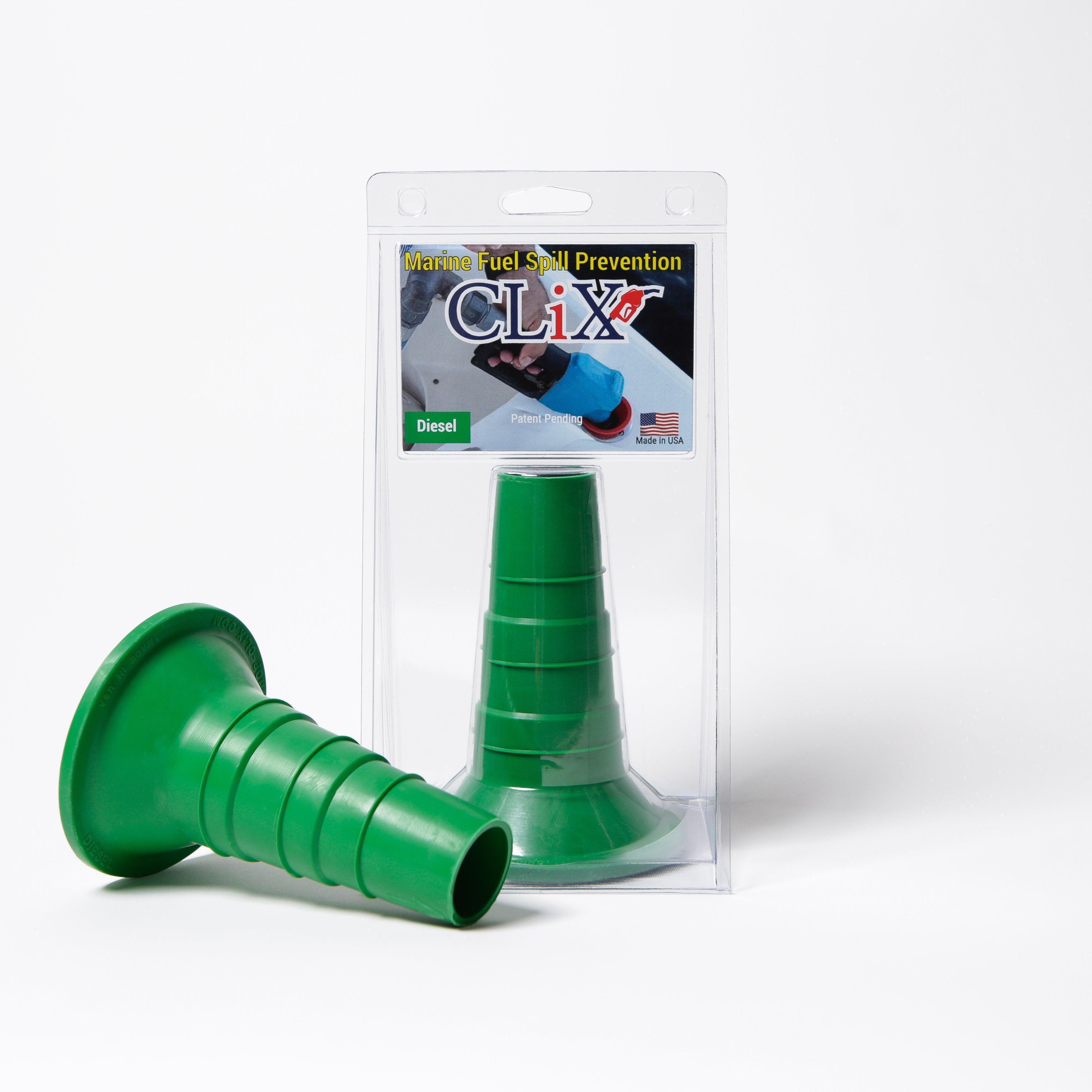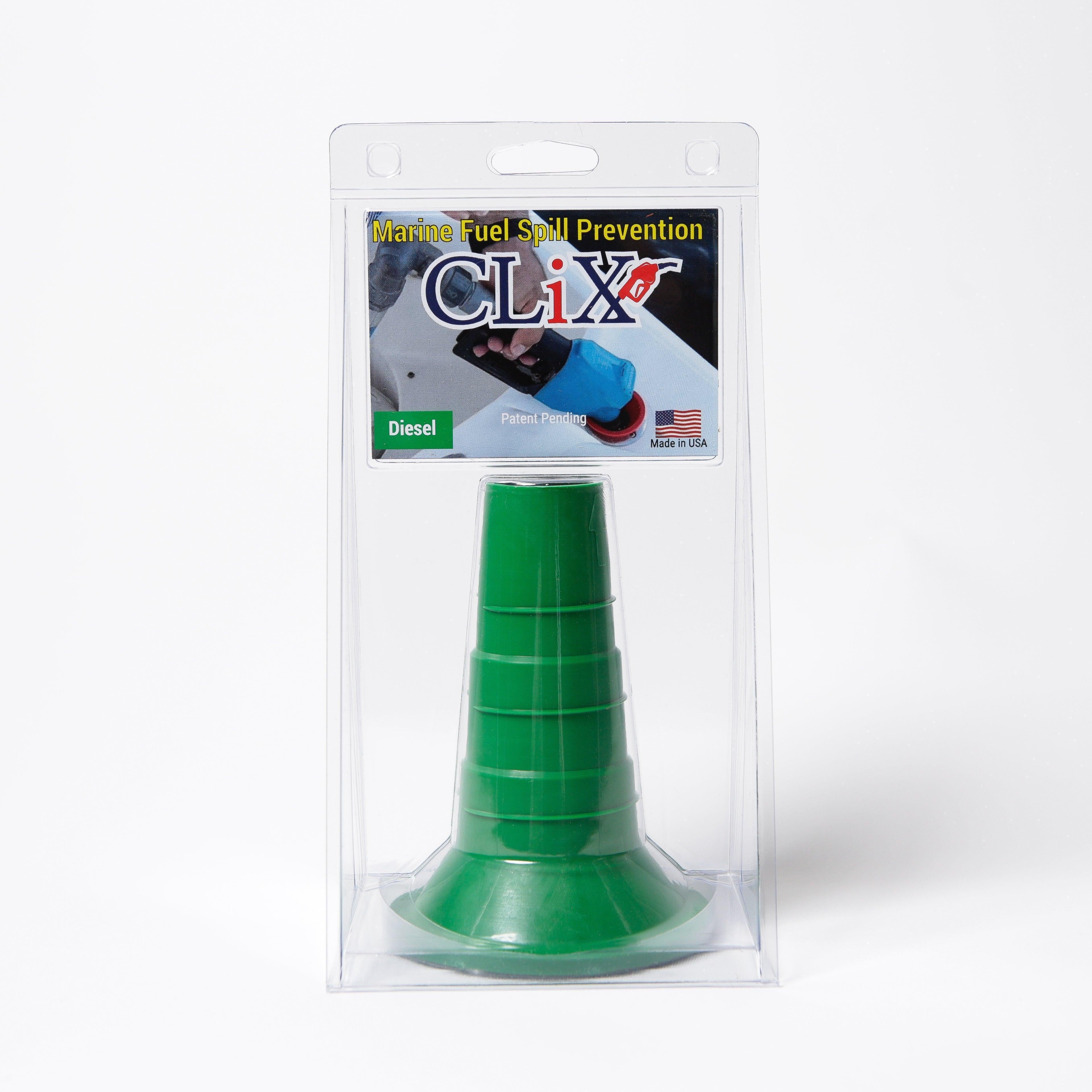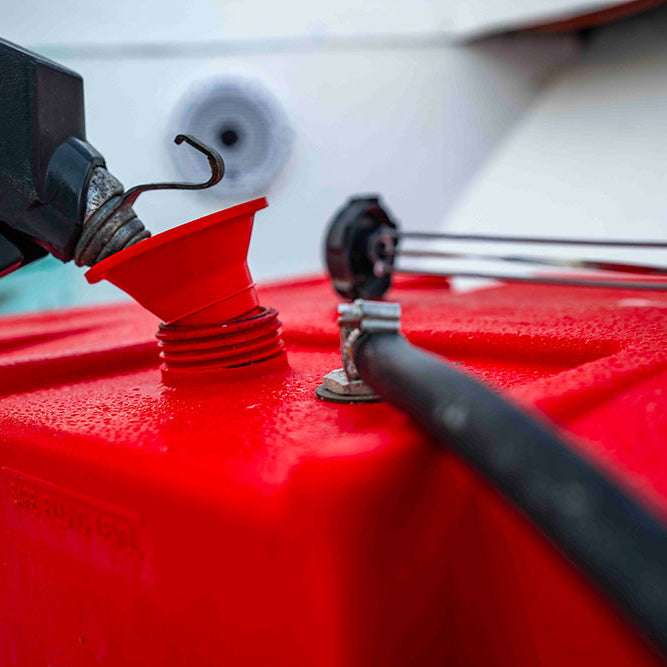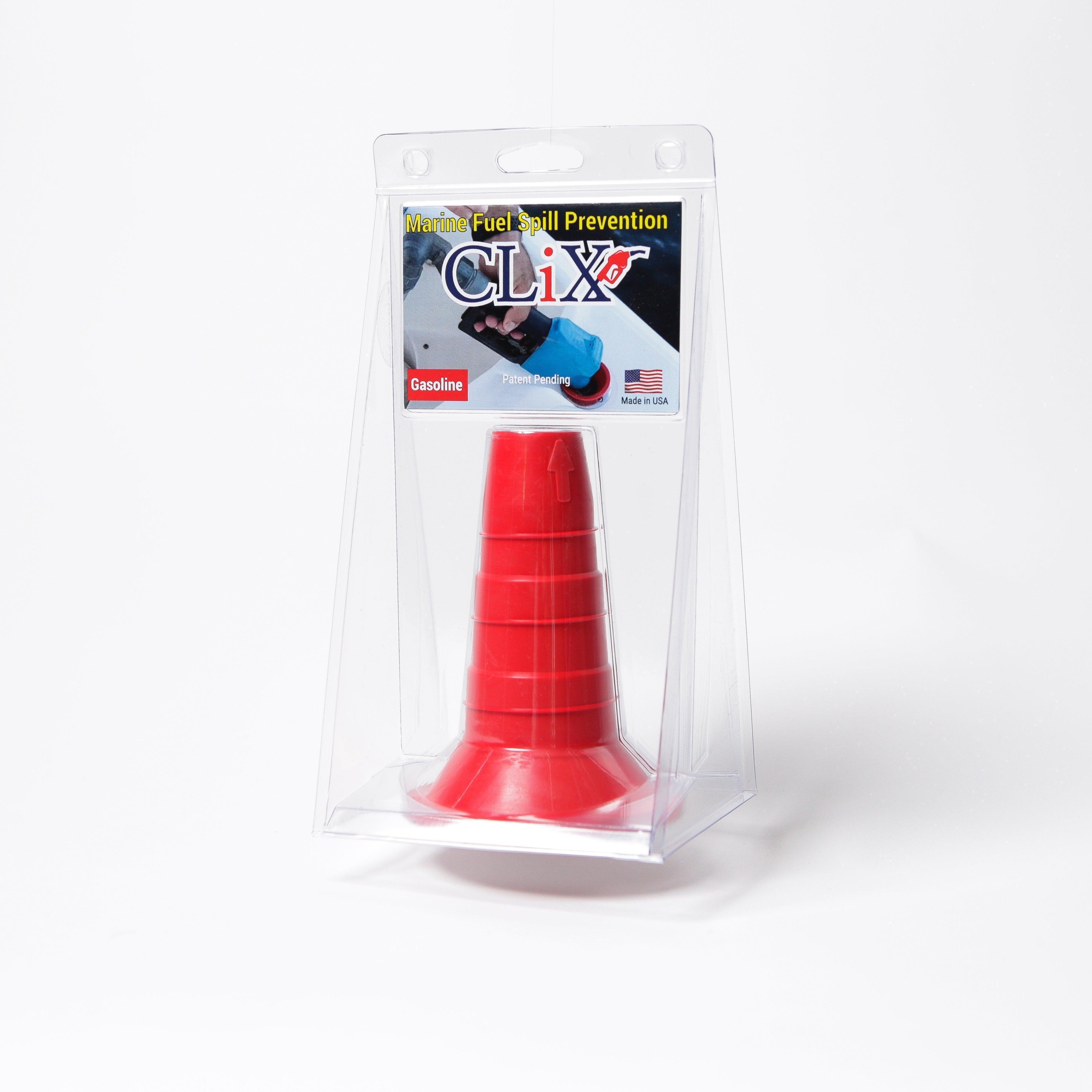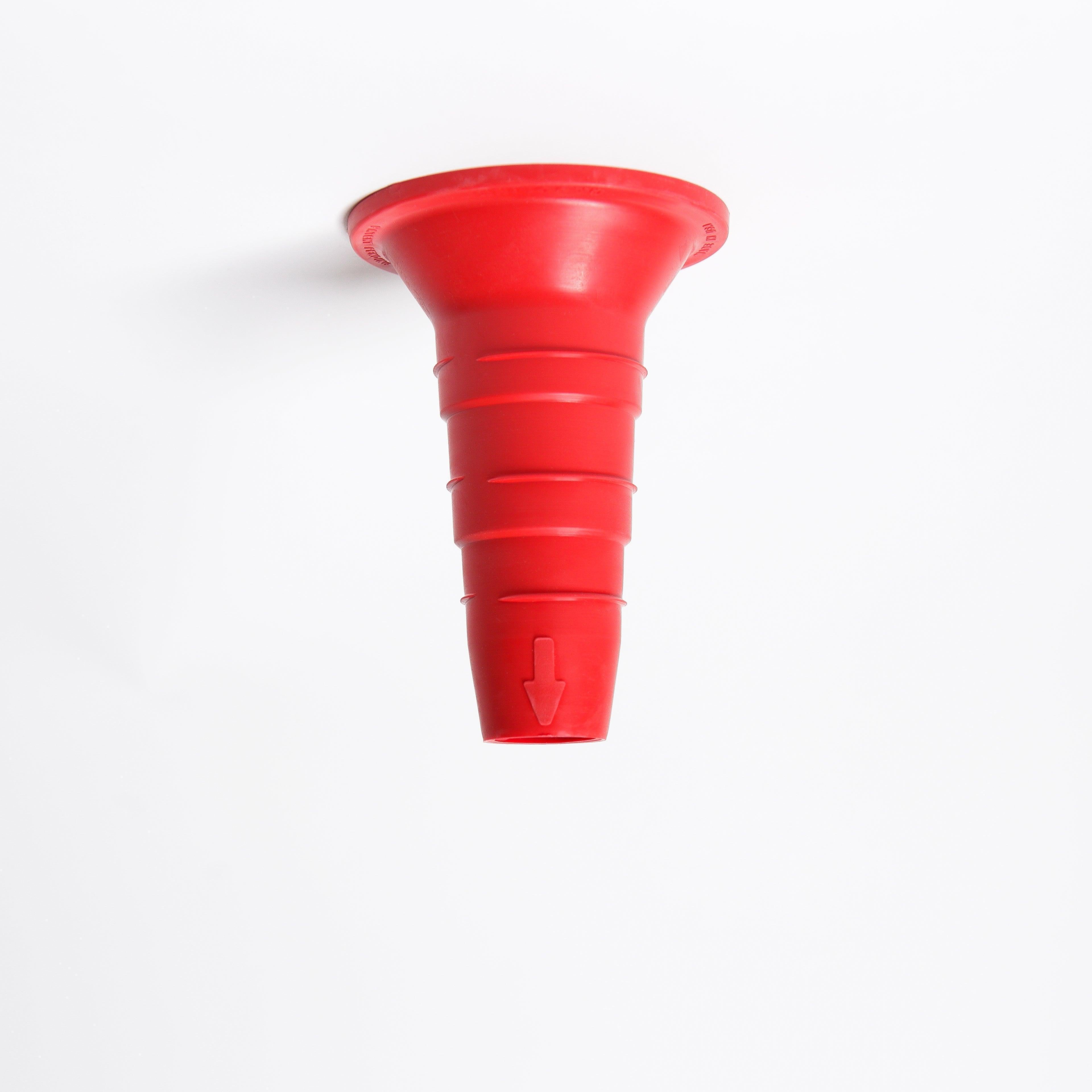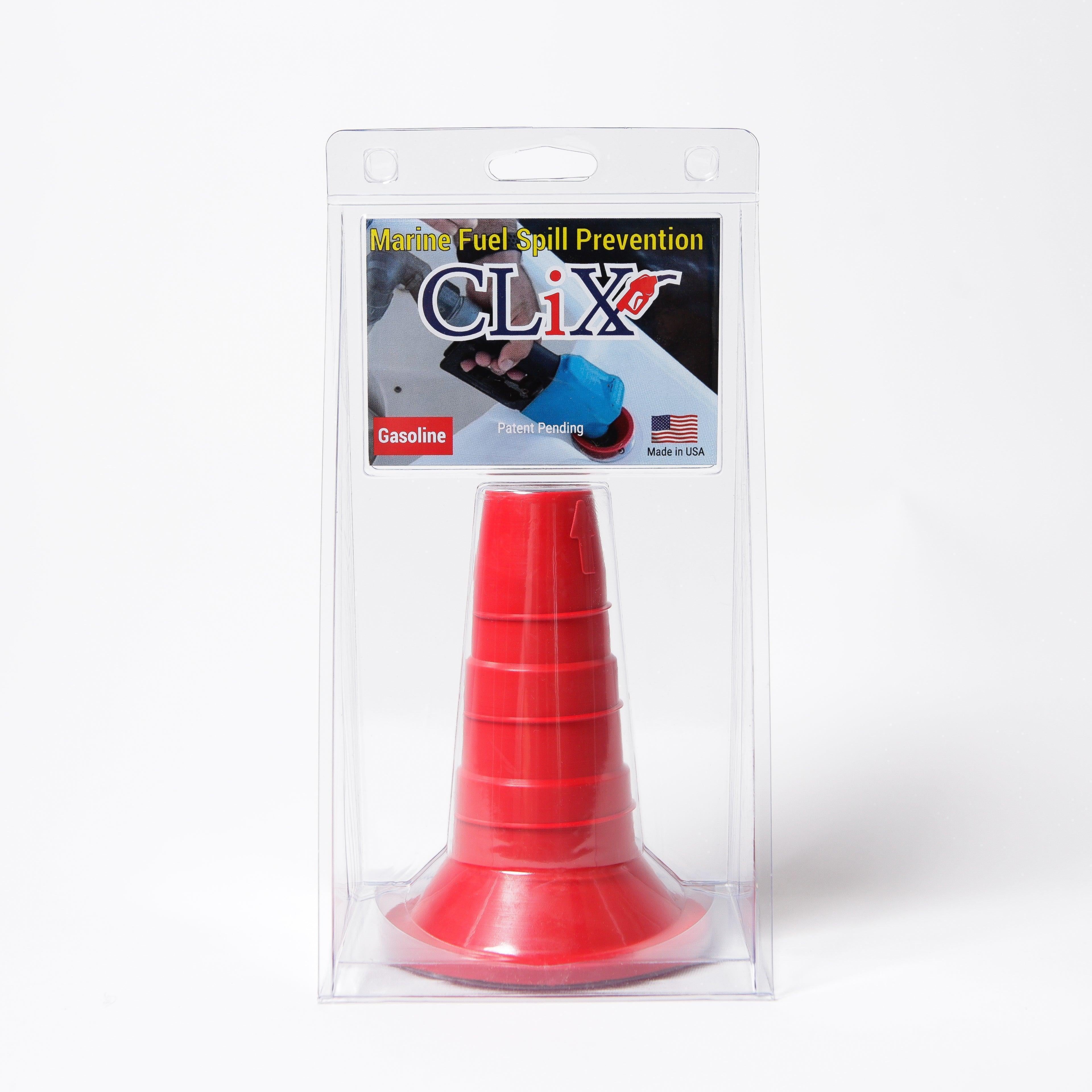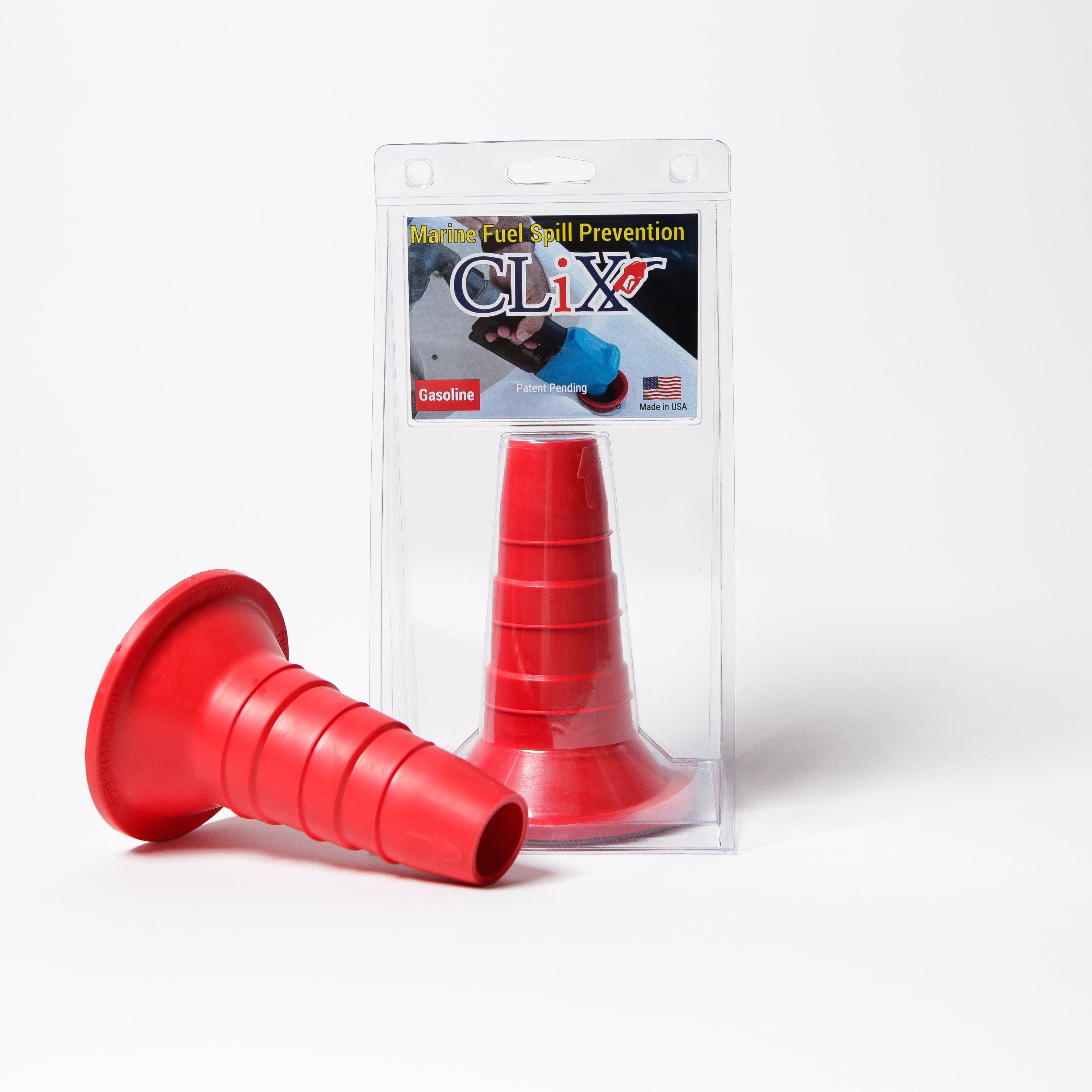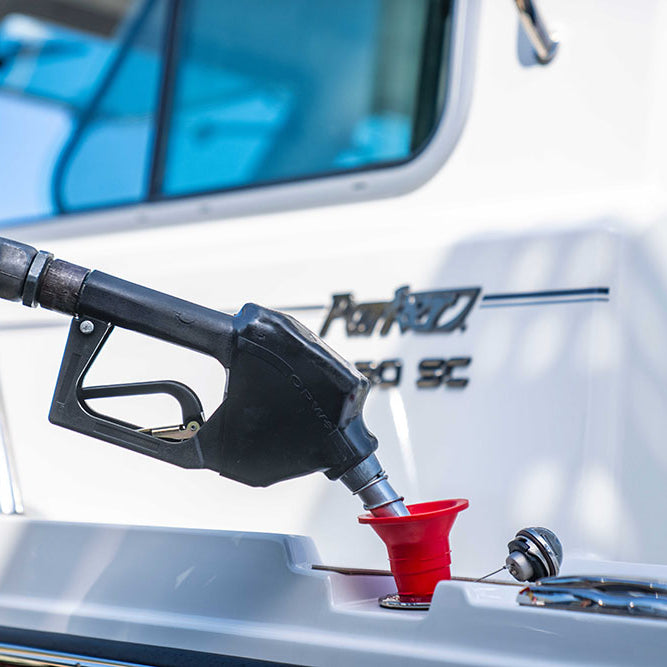Understanding Why Boat Fueling Safety Actually Matters
Boat fueling may seem straightforward, much like filling up your car. However, the marine environment introduces specific safety concerns that require extra attention. Ignoring these differences can lead to serious, even catastrophic, incidents.
One crucial factor is the nature of fuel vapors. On land, these vapors dissipate quickly. On a boat, they can accumulate in enclosed areas such as bilges and engine compartments, creating a highly flammable mixture. Even a tiny spark from an electrical switch or a dropped tool could ignite these vapors, potentially causing a fire or explosion. The rocking motion of the boat can further agitate the fuel, releasing more vapors and increasing the danger.
Many boaters mistakenly assume that automotive safety practices apply directly to boats. While there are some similarities, critical differences exist. Unlike cars, boats are constantly exposed to the elements. Wind, waves, and rain can complicate fueling, making spills more likely and potentially introducing fuel into the water. Understanding how weather affects fueling safety is essential.
Boat fueling safety is paramount, particularly for recreational boating. The increasing number of recreational boaters highlights the need for proper marine fueling systems. In the U.S., almost 30% of people engage in boating activities, emphasizing the necessity of robust safety measures to prevent accidents like fires and explosions at fueling docks. Learn more about the importance of proper fueling systems here: Proper Marine Fueling Systems
Confined Spaces and Fueling Hazards
Many boats have limited space around fuel tanks and fill plates. This makes maneuvering fuel hoses difficult. These confined spaces can also trap fuel vapors, increasing the risk of fire. Proper ventilation is crucial. Opening hatches and allowing fresh air to circulate helps dissipate these dangerous vapors.
Environmental Factors and Fueling Safety
The marine environment introduces additional risks. Fuel spills, even small ones, can pollute the water and harm marine life. This environmental impact emphasizes the importance of responsible fueling practices that focus on preventing and containing spills. Regulations and legal requirements mandate specific fueling procedures to safeguard our waterways. Understanding and following these guidelines is critical. These factors combined demonstrate why boat fueling safety requires careful attention and meticulous execution. It's not just about protecting your boat and passengers, but also about preserving the marine environment.
Your Pre-Fueling Safety System That Actually Works
Forget generic checklists. This section details a practical, field-tested pre-fueling system that seasoned boaters rely on. We'll break down each important step, explaining why it matters, from properly shutting down your engine to strategically positioning your crew. This proactive approach minimizes risks and ensures a safe fueling experience.
Assessing Your Fueling Environment
Before you even think about picking up a fuel nozzle, take a good look around. Check the wind direction and speed. Strong winds can carry fuel vapors, making fueling more difficult. Identify anything nearby that could ignite the fuel, like running engines or smoking materials. Check the fuel dock itself for spills or obstacles. This careful inspection is the first step to safe fueling.
Also, think about the type of boat you're fueling. Larger boats may have different procedures than smaller boats because of their size and complexity. For example, sailboats with inboard engines often have specific ventilation requirements that you should address before fueling. This initial assessment, specific to your boat and environment, is crucial for safety.
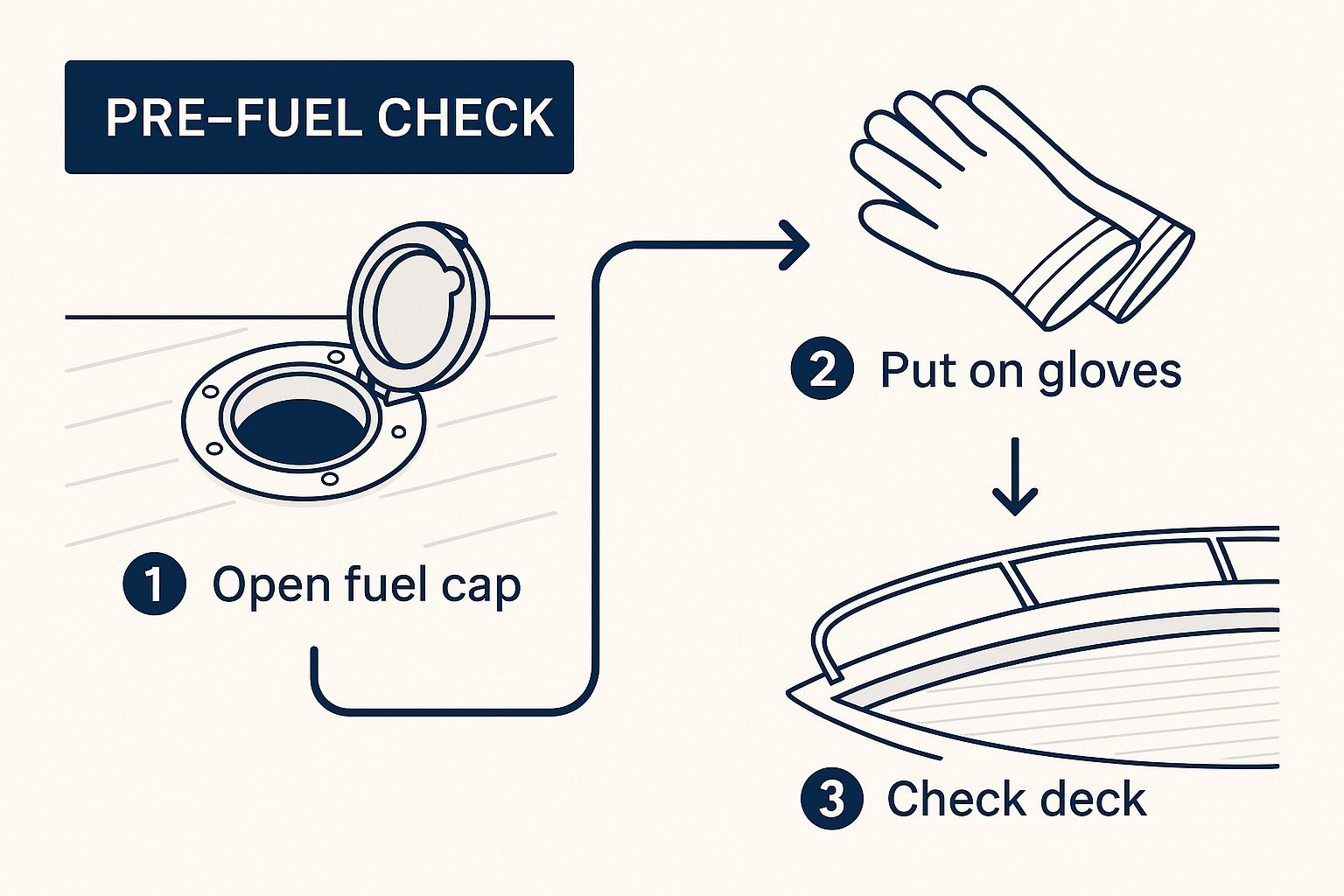
This infographic highlights the essential first step of a pre-fuel check. Make sure you have safety gear, like gloves, ready to go and that the fuel cap is open. These simple visual reminders emphasize the importance of attention to detail when it comes to boat fueling safety.
Establishing Clear Communication Protocols
Clear communication is essential during fueling. Choose one crew member to be in charge of the fueling process. This person should communicate with the fuel dock attendant and make sure everyone follows safety procedures. For instance, using hand signals to start and stop fueling can prevent confusion.
It's also important to review emergency procedures with your crew in case of a spill or fire. Everyone should know where the fire extinguishers, spill containment materials, and emergency shut-off valves are located. A well-informed crew, ready for anything, is a huge asset for safe fueling.
A comprehensive analysis of marina incidents found that 78% of fuel-related accidents could have been prevented with proper pre-fueling safety protocols. These protocols include engine shutdown procedures and crew positioning. Learn more: Marina Safety Analysis
Preparing for Different Conditions and Recognizing Warning Signs
Different weather conditions require different preparations. In hot weather, avoid overfilling your tank to allow for fuel expansion. In cold weather, be aware of the possibility of fuel lines freezing. Recognizing these small but important details helps prevent problems and ensures safe fueling no matter the weather. For a clean, spill-free fueling solution, you might want to check out: CLiX at the New York Boat Show
Finally, know the warning signs that might mean you should postpone fueling. Strong fuel odors, a suspected leak, or unusual engine behavior all warrant further investigation. Put safety first. Postpone fueling and address the issue. This comprehensive pre-fueling system helps you fuel your boat confidently and safely, protecting yourself, your vessel, and the environment.
Mastering Safe Fueling Techniques And Equipment
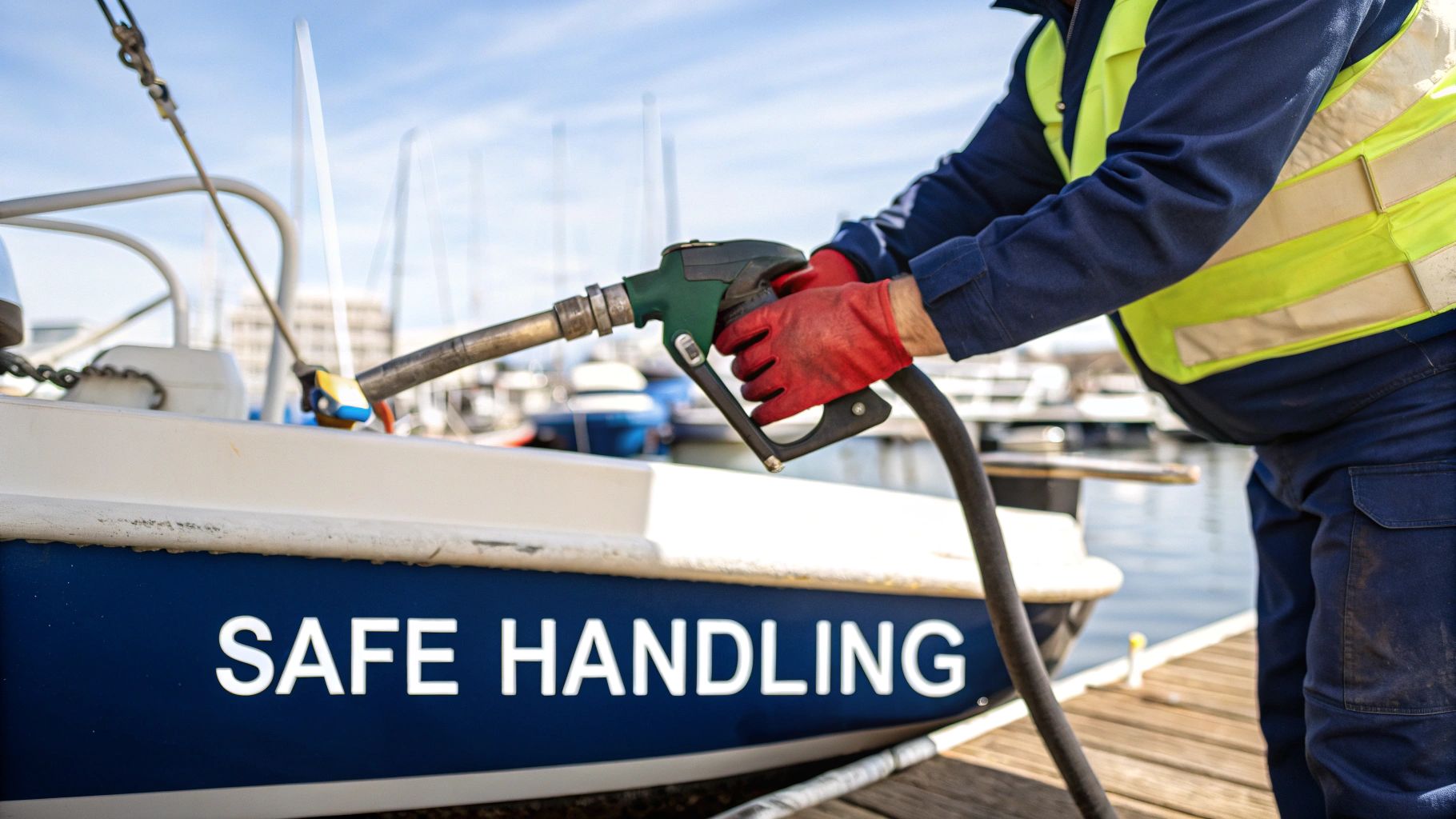
This image highlights proper fueling technique. The person has a secure hold on the nozzle, minimizing spills. This careful approach is crucial for safe boat fueling.
Grounding and Static Electricity Prevention
Even a tiny static spark can ignite fuel vapors, causing serious accidents. Understanding how to prevent static buildup is essential for safe fueling. Grounding your boat to the fuel dock before fueling is the first step. This connection equalizes electrical potential, preventing dangerous sparks.
Many modern fuel docks have designated grounding points. Always double-check the connection to ensure it's secure.
Consider using static dissipating fuel nozzles. These specialized nozzles prevent static buildup during fuel transfer, further reducing the risk of ignition. These simple steps significantly improve fueling safety.
Maintaining Optimal Fuel Flow and Recognizing Equipment Issues
Controlling fuel flow prevents spills and promotes efficient fueling. A slow, steady flow is best. Avoid squeezing the nozzle trigger too hard, as this can cause splashing and overfilling. Imagine filling a glass too fast; it overflows. The same principle applies to fueling your boat. Patience and a controlled approach are key.
Regularly inspect and maintain your fueling equipment. Check fuel lines for cracks, wear, and loose connections. Also, inspect the fuel nozzle for damage and proper function. A worn nozzle can leak and spill, creating safety hazards.
Essential Safety Gear and Spill Containment Strategies
Having the right safety gear is crucial for handling emergencies. Here are some essential items:
- A properly sized marine fire extinguisher: Choose one designed for marine use and inspect it regularly.
- Absorbent spill containment materials: Keep absorbent pads or booms onboard for quick cleanup.
- Gloves and eye protection: These protect you from fuel contact, minimizing health risks.
Keep these items accessible and in good working order. Being prepared allows you to respond effectively to any fueling incident.
Spill containment is equally vital. If a spill occurs, act fast. Use absorbent materials to contain and prevent spreading. For larger spills, contact the marina or local authorities immediately. This quick response minimizes environmental damage and ensures safety.
To help you further understand the equipment needed for safe fueling, we've compiled a comparison table:
Essential Fueling Safety Equipment Comparison
This table compares different types of safety equipment for various vessel sizes and fueling scenarios.
| Equipment Type | Small Boats | Large Vessels | Purpose | Maintenance Frequency |
|---|---|---|---|---|
| Marine Fire Extinguisher | B-I | B-II or larger | Extinguish fuel fires | Inspect monthly, service annually |
| Spill Containment Pads | 1-2 packs | Multiple packs/booms | Absorb small spills | Replace after use |
| Spill Containment Booms | Optional | Recommended | Contain larger spills | Inspect regularly, clean/replace as needed |
| Static Dissipating Nozzle | Recommended | Essential | Prevent static sparks | Inspect regularly |
| Fuel Line Assembly | Inspect regularly | Inspect regularly | Transfer fuel safely | Replace as needed |
| Gloves & Eye Protection | Recommended | Essential | Protect skin and eyes | Replace as needed |
This table summarizes the essential safety equipment for small and large boats. Remember to inspect and maintain this equipment regularly for optimal safety.
Fuel System Maintenance and Early Warning Signs
Maintaining your fuel system is crucial for safe and efficient operation. Inspect fuel tanks, filters, and vents regularly for leaks, corrosion, or damage. Preventative maintenance identifies potential problems early. Also, be aware of warning signs like strong fuel odor, difficulty starting, or reduced performance. Addressing these promptly maintains boat fueling safety.
Protecting Our Waters While Protecting Yourself
Protecting the environment is important for everyone, and it's a critical part of safe boat fueling. Fuel spills can result in hefty fines and legal issues. This section covers proven spill prevention methods that work in real-world boating situations, from advanced nozzle techniques to effective containment systems. These strategies not only help protect our waters but can also save you thousands in potential cleanup expenses.
Spill Prevention Strategies for Safer Fueling
One of the best ways to prevent spills is using fueling nozzles designed to minimize them. Some newer nozzles have features like automatic shut-off valves that engage when the tank is full. This simple feature helps prevent overfilling, a common cause of spills. It's similar to the automatic shut-off on a gas pump at a regular gas station, which prevents overflow and hazardous situations.
Additionally, proper fueling technique makes a big difference. Keeping a slow, steady fuel flow into the tank reduces splashing and turbulence. Don't squeeze the nozzle trigger too hard, as this can cause a sudden rush of fuel and a potential spill. Think of it like pouring a drink too fast – it’s likely to splash. The same idea applies to fueling your boat.
Containment systems, like absorbent pads or booms, offer extra protection. Placing these around the fuel fill area before you start fueling can catch any small spills that may happen. These are especially helpful in rough water where the boat might be rocking, making it harder to control the fuel flow.
The True Cost of Fuel Spills: Beyond the Immediate Mess
The cost of a fuel spill goes far beyond the initial cleanup. Regulatory penalties for spills can be significant, potentially causing serious financial problems for boaters. In addition to fines, you could be held responsible for environmental damage, including the cost of restoring impacted areas. This means you might have to pay not just for cleaning up the spill but also for the effects on marine life and the surrounding ecosystem.
You might find this interesting: How to Prevent Marine Pollution for further information on lessening your environmental footprint while boating.
Beyond the financial costs, there's the damage to your reputation to consider. A fuel spill can hurt your image as a responsible boater, affecting your standing in the boating community. Keeping a clean environmental record is important for all boaters.
Investing in Prevention: Long-Term Savings and Peace of Mind
Investing in the right fueling equipment and training is a smart financial move in the long run. While advanced nozzles and containment systems might have an initial cost, they can save you a lot of money by preventing expensive spills and penalties. This means that making prevention a priority isn't just good for the environment, it's good for your wallet. The recreational boating industry is working to lessen its environmental impact. The National Marine Manufacturers Association (NMMA) and its partners have successfully decreased U.S. recreational boating emissions by over 90% and boosted fuel efficiency by more than 40% since 2004. You can find more detailed statistics here: NMMA Environmental Initiatives
Furthermore, effective prevention measures give you peace of mind, knowing you've done what you can to protect yourself, your boat, and the environment. This lets you enjoy your time on the water without worrying about the possible consequences of a spill.
Emergency Protocols: When Prevention Isn't Enough
Even with the best preventive measures, accidents can happen. It's essential to have a clear emergency plan.
- Stop the flow of fuel: If a spill happens, immediately turn off the fuel supply.
- Contain the spill: Use absorbent materials to keep the fuel from spreading.
- Notify the authorities: Contact the marina management or local authorities to report the spill.
- Document the incident: Take photos and write down details about the spill for insurance reasons.
These steps ensure a quick and effective response, minimizing the environmental impact and protecting your interests. By combining effective spill prevention methods with a solid emergency plan, you can enjoy boating with confidence, knowing you’ve done your part to protect our waters and yourself.
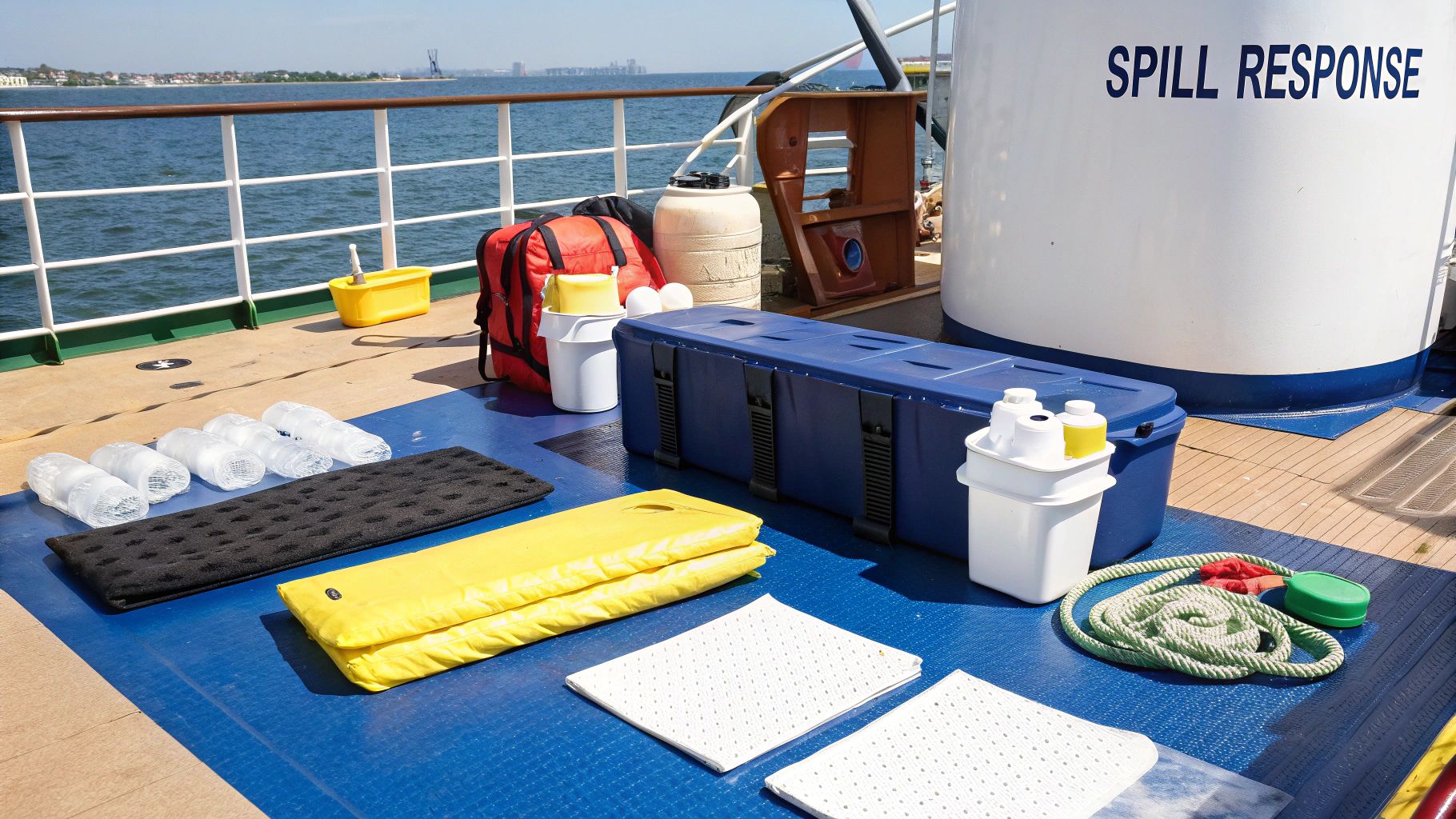
Emergency Response When Everything Goes Wrong
When a fueling emergency happens, the first minute is crucial. Your actions in those 60 seconds can determine the difference between a minor incident and a major catastrophe. This guide provides proven emergency protocols for fuel-related issues, ranging from small spills to devastating fires.
Rapid Threat Assessment and Effective Response Procedures
Experienced mariners know that clear thinking under pressure is essential. The first step in any emergency is a rapid threat assessment. Quickly identify the immediate danger. Is it a spill? A fire? Or a combination of both? Where is the fuel coming from, and are there any ignition sources nearby? These quick answers will guide your response.
Once the threat is assessed, take the appropriate action. For spills, containment is the priority. Use absorbent materials to prevent the fuel from spreading. If a fire breaks out, activate your fire suppression system and use the appropriate fire extinguisher. Taking these steps immediately can prevent a small problem from escalating into a disaster.
Communicating Effectively With Emergency Services
If the situation becomes uncontrollable, immediately contact emergency services. Clear, concise communication is vital. Tell them your location, vessel description, the nature of the emergency, and any steps you’ve already taken. This allows responders to quickly assess the situation and send the right resources. This fast communication can save lives. Also, report the number of people onboard and any injuries. Provide details about the type of fuel, estimated quantity spilled or burned, and the proximity to any environmentally sensitive areas.
For further information on handling fuel spills, check out this guide: Fuel Spill Cleanup Procedures - Expert Response Guide.
Between 2012 and 2020, the BSEE documented 4,474 offshore incidents, resulting in 1,654 injuries and 23 deaths. While not solely related to boat fueling, these statistics highlight the importance of strict safety standards in all offshore operations. You can find more detailed statistics here: Offshore Injury Statistics.
Preparing Your Crew Through Drills and Understanding Psychological Factors
Regular emergency drills are essential. Drills familiarize the crew with emergency procedures, building muscle memory and improving reaction time. Practice spill containment, fire suppression, and communication protocols. For example, “man overboard” drills help practice retrieving someone from the water, preparing the crew for coordinated action in stressful situations.
Psychological factors play a significant role in emergency response. Fear, panic, and confusion can impair decision-making. Training builds confidence and minimizes these negative effects. A calm and collected crew performs more efficiently, leading to better outcomes. Regular drills also reinforce each crew member’s role, promoting shared responsibility and teamwork. This shared understanding improves coordination during a crisis.
Navigating Regulations Without Losing Your Mind
Understanding boating regulations can seem like a daunting task, but it doesn't have to be. By focusing on the specific rules that apply to your vessel and where you operate, you can simplify the process considerably. This section provides practical guidance on federal, state, and local regulations related to boat fueling, for both recreational and commercial boaters.
Understanding Federal Regulations for Boat Fueling
Federal regulations establish a fundamental level of safety for boat fueling across the United States. These regulations, often enforced by the U.S. Coast Guard, cover important areas such as the structural integrity of fuel systems, proper ventilation requirements, and preventing spills. For instance, there are specific regulations outlining acceptable materials for fuel lines and tanks to minimize the risk of leaks and permeation. A solid understanding of these requirements is the first step toward compliance.
State and Local Regulations: Adding Another Layer
Federal regulations provide the base, but states and local jurisdictions often add their own specific rules. These might cover designated fueling locations, mandatory safety equipment, or particular procedures for dealing with fuel spills. As an example, some states might have stricter rules about disposing of fuel-soaked absorbent materials. It's important to check with your state boating agency and local marina for details on the regulations that apply to your situation.
Documentation and Inspection Protocols: Staying Ahead of the Curve
Keeping accurate records is crucial for demonstrating compliance. This can include documentation of fuel system inspections, regular maintenance logs, and certifications for any specialized equipment. It's similar to keeping records of your car's maintenance – it provides proof that you're taking the necessary steps to ensure safe and proper operation.
Regular inspections are also an integral part of regulatory compliance. These inspections, frequently carried out by regulatory agencies, help ensure that your boat's fueling system meets the required standards. Knowing what inspectors typically look for can help you prepare and avoid potential problems. For example, inspectors might examine the labeling of fuel lines, check for the presence of necessary safety equipment like fire extinguishers, and assess the condition of fuel tanks and vents.
To help illustrate the various regulations, the following table summarizes key requirements based on vessel type and operating area. Keep in mind that these are common examples, and specific regulations can differ.
Regulatory Requirements by Vessel Type
This table offers an overview of key regulatory requirements for different vessel categories and operating areas.
| Vessel Type | Federal Requirements | State Requirements | Documentation Needed | Inspection Frequency |
|---|---|---|---|---|
| Recreational Boats < 26 ft | USCG fuel system standards | Varies by state (e.g., California Air Resources Board requirements) | Maintenance logs, proof of proper equipment | Typically upon request or during routine safety checks |
| Commercial Vessels | More stringent USCG requirements, including specific training and certification | Varies by state and port | Detailed maintenance and inspection records, crew certifications | Regular inspections based on vessel size and operation |
This table simplifies the complexity of regulatory requirements, highlighting the core differences between recreational and commercial vessels. The main takeaway is that commercial vessels face more stringent requirements across the board, from equipment standards to crew training and documentation.
In the event of an emergency, being prepared is paramount. Having a comprehensive first aid kit is essential for handling unexpected situations. For guidance on assembling a well-stocked kit, consider resources like this Emergency Preparedness First Aid Kit.
Working Effectively With Regulatory Agencies
Developing a good working relationship with regulatory agencies is vital. Treat inspectors respectfully and be receptive to their feedback. Promptly addressing any identified issues shows your commitment to safety and compliance. Consider them allies in boat fueling safety, working together toward a safe boating environment for all.
By understanding the relevant regulations, maintaining accurate documentation, and proactively addressing any potential problems, you can navigate the regulatory landscape with confidence and enjoy a safe and pleasurable boating experience.
Key Takeaways
This section offers a practical guide to implementing boat fueling safety, protecting your vessel, your crew, and your investment. We've condensed the most important safety protocols, critical warning signs, and key success metrics into actionable steps you can use right away.
Pre-Fueling: Essential Checks and Preparations
Before you even begin fueling, a thorough assessment is critical. This includes checking the following:
- Wind Conditions: Strong winds can spread fuel vapors, increasing the risk of fire.
- Surrounding Hazards: Identify potential ignition sources such as open flames or running engines.
- Fuel Dock Condition: Be on the lookout for spills or obstacles.
- Vessel-Specific Requirements: Different boat types have unique preparation needs. For example, sailboats often have specific ventilation procedures.
Taking these steps before fueling creates a foundation for a safe process.
Fueling Techniques: Mastering the Process
Safe fueling involves understanding and using key techniques. These include:
- Secure Grounding: Properly grounding your boat to the fuel dock prevents static buildup. This is a vital safety measure.
- Controlled Fuel Flow: Maintaining a slow, steady fuel flow minimizes spills and prevents overfilling. It's like carefully pouring a drink – rushing the process leads to spills.
- Proper Nozzle Use: Keeping the nozzle in contact with the fill plate helps minimize static electricity.
These seemingly minor actions are critical for reducing risks. When handling fuel transactions, protecting your information is important. Review the fuel dock's Privacy Policy for details on their practices.
Equipment Essentials: Protecting Yourself and the Environment
Having the right equipment on hand is crucial. Key items include:
- Marine Fire Extinguisher: Ensure you have the correct type and size for your vessel.
- Spill Containment Materials: Absorbent pads and booms are essential for quick spill response.
- Personal Protective Equipment (PPE): Gloves and eye protection minimize your exposure to fuel.
These items are your first line of defense in a fueling emergency.
Post-Fueling: Verification and Ventilation
After fueling, specific checks and procedures are just as important as those beforehand. These include:
- Thorough Ventilation: Open hatches and allow fresh air to circulate. This dissipates potentially hazardous fuel vapors.
- Odor Check: Inspect for any fuel smells, which could indicate a leak.
- Engine Monitoring: Run the engine briefly and watch for any performance issues that might be related to the fueling process.
These final steps help ensure a safe departure.
Emergency Response: Be Prepared
Even with precautions, accidents can still occur. Key emergency steps include:
- Stop the Fuel Flow: Immediately shut off the fuel source at the first sign of a spill or fire.
- Contain the Spill: Use absorbent materials to prevent the spill from spreading.
- Contact Authorities: Notify the marina or local authorities immediately.
- Document the Incident: Take photos and detailed notes for insurance purposes.
Quick action is critical in an emergency situation.
Regulatory Compliance: Staying Informed
Understanding relevant regulations is essential for safe boating. Key aspects include:
- Federal Regulations: Familiarize yourself with USCG requirements for fuel systems and safety equipment.
- State and Local Rules: Be aware of any additional regulations that apply to your specific boating area.
- Documentation and Inspections: Maintain proper records and be prepared for routine inspections.
Compliance not only promotes safety but also helps you avoid potential penalties.
Implementing Your Safety System: A Practical Timeline
Putting these recommendations into practice can be done in phases:
- Immediate Actions: Start with the essential checks and preparations before your next fueling trip.
- Short-Term Goals: Acquire the necessary safety equipment and review emergency procedures with your crew.
- Long-Term Strategy: Develop a comprehensive fuel safety plan that includes regular training and equipment maintenance.
This timeline helps you build a strong and effective safety program. By incorporating these key takeaways into your boating routine, you can increase safety, protect the environment, and enjoy worry-free time on the water. For a spill-free fueling experience, consider CLiX Fueling Solutions. This innovative system automatically stops the fuel nozzle when your tank is full, preventing spills and protecting your vessel. Learn more at CLiX Fueling.

